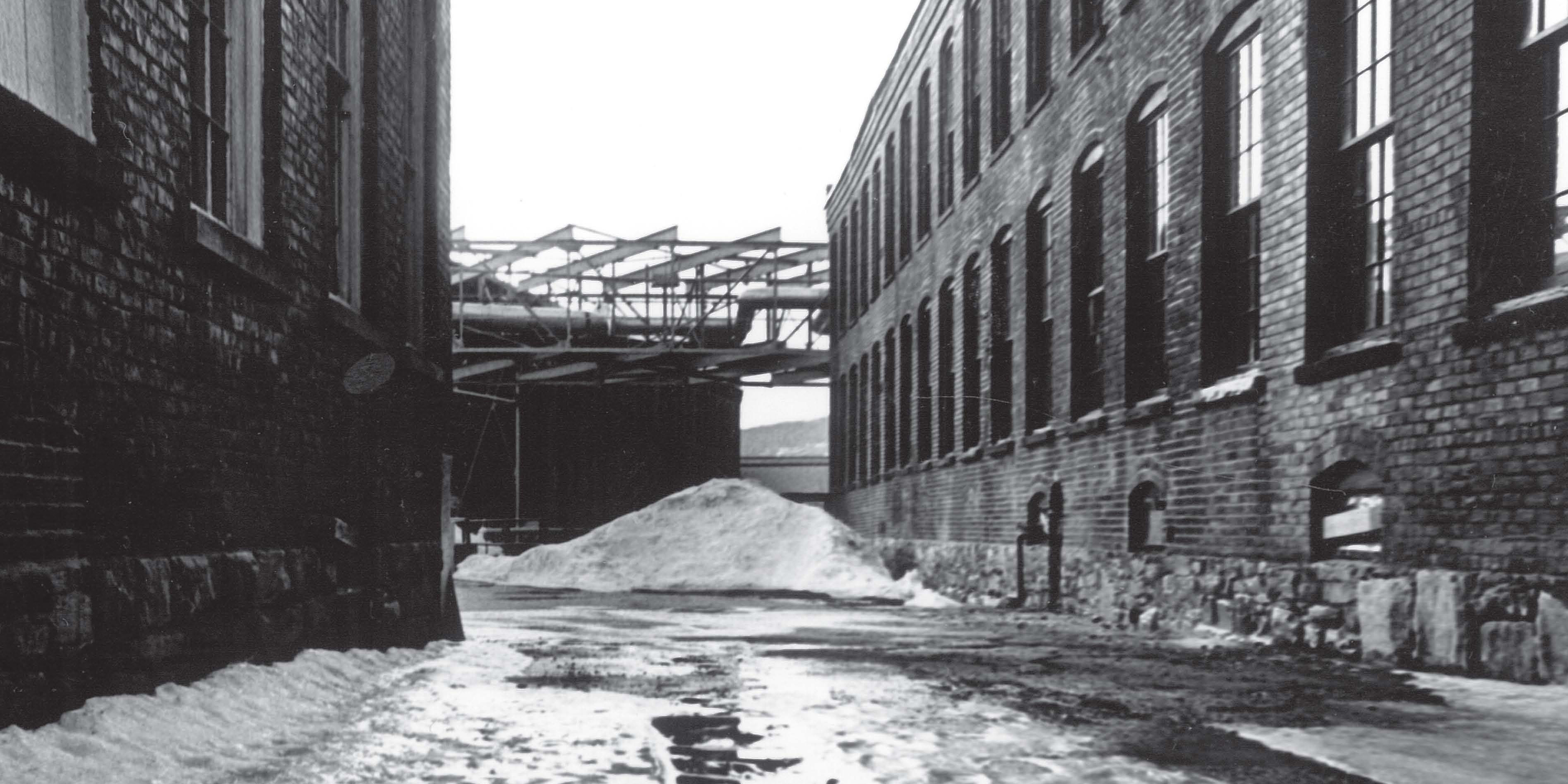Archive Exhibitions, Exhibition
- July 28 - November 5, 2018
- Building 26/34
MASS MoCA will host a temporary exhibition of the photographs, found objects, and archival materials gathered from its Marshall Street mill complex by local artist, firefighter, and community volunteer Christopher Gillooly. A glimpse into the interim years between Sprague Electric Company’s departure in the mid-1980s and the museum’s opening in 1999, Transition captures both the stark reality of a seemingly interminable birthing process, alongside the beautiful textures and sheer drama of the buildings. The exhibition will be installed in a yet-to-be renovated space adjacent to the historic guardhouse (soon to be home of the A-oK Berkshire Barbeque).
Patrons joined us for the Transitions: Fall Foliage Community Reception on Thursday, September 27, 2018 from 5-7:30pm.
“This exhibition is as much a testament to the former Sprague employees and to the North Adams community that came together in support of MASS MoCA as it is an ode to the bricks and mortar, industrial artifacts, and collective memories that make these mill buildings so hauntingly raw and beautiful.” — Christopher Gillooly
The years between the departure of Sprague Electric Company from Marshall Street in the mid-1980s, and the eventual opening of MASS MoCA in 1999, were full of optimistic promises and daunting challenges, both for the North Adams community and for planners and volunteers working on the nascent museum concept.
After winning a keystone state grant in 1988, a major recession and changes in state political leadership stalled funding for nearly 8 years, forcing museum advocates to turn to private support while they re-calibrated the core idea, developing a multi-year, phased approach that would incorporate an ambitious performing arts program, a roster of changing exhibitions and newly commissioned works, (instead of a fixed, permanent display of Minimal Art), and robust commercial real estate initiative. During that time of fund-raising and re-conceptualization, many of the abandoned buildings slowly fell into disrepair, even as the small museum staff staged interim events, concerts, and a few “pop up” exhibitions to illustrate the site’s dramatic potential.
Gillooly documented these interim years, both through his own photographs taken on the fly as he undertook volunteer work across the campus, and through the salvaging of historic documents, archival materials, and objects gathered from the 16-acre, 28-building factory complex, some of which he re-cast as found-art sculpture. A small selection of Gillooly’s photographs and archival materials is presented in a still un-renovated space that intentionally recalls the feeling and state of the factory campus prior to its conversion as a center for contemporary visual and performing arts in 1999.


